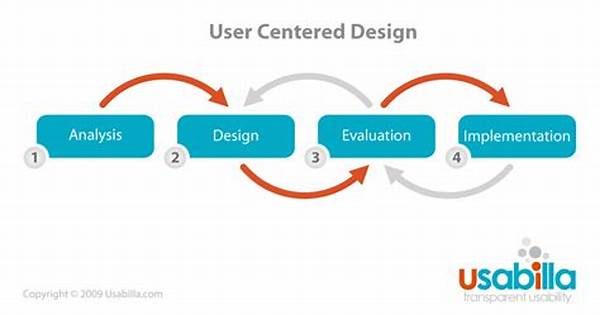User-centered design methodologies are central to the creation of products that not only meet functional requirements but also align closely with the needs and expectations of users. These methodologies prioritize the user’s perspective at every stage of the design process, ensuring that the end product is intuitive and accessible. By adopting these methodologies, designers can gather valuable feedback and insights, resulting in a final product that delivers a more satisfying and engaging user experience. Over the years, these approaches have become integral to the fields of design and development, influencing numerous industries that rely on digital and physical interactions.
Read Now : Certified Remote Teaching Resources
Understanding User-Centered Design Methodologies
User-centered design methodologies employ a variety of tools and techniques that focus on user involvement throughout the development cycle. This participatory approach involves users from the initial stages, starting with user research to gather data about their needs and preferences. Empathy mapping and personas are often used to synthesize this data, providing a nuanced view of user types and their specific requirements. By continually iterating designs based on user feedback, designers can refine their creations to ensure that they are meeting real-world needs effectively. By emphasizing usability testing, designers can identify potential issues and areas for improvement before a product is finalized. This iterative process results in products that are not only functional but also meaningful and engaging to the end user, ensuring that the final output aligns with user expectations and enhances user satisfaction.
Principles Guiding User-Centered Design Methodologies
1. Empathizing with Users: The first step in user-centered design methodologies is to fully understand the users, their needs, and their problems. This process involves observation, engagement, and empathy to identify underlying issues and preferences.
2. Defining User Needs: After empathizing with users, the next focus is on accurately defining their needs and challenges. This definition guides the development process, ensuring that solutions align with user expectations.
3. Ideation: User-centered design methodologies encourage creativity in problem-solving, where designers are encouraged to think broadly and explore multiple solutions. Brainstorming sessions and workshops often facilitate this ideation phase.
4. Prototyping: Creating prototypes is a key element of user-centered design. These early models allow designers to explore ideas in a tangible form and provide users with visible concepts that can be tested and refined.
5. Testing: User-centered design methodologies prioritize regular testing with real users. This stage provides critical feedback that drives revisions and improvements, ensuring the final product is both effective and user-friendly.
Read Now : Watercolor Painting Weekend Ideas
Benefits of User-Centered Design Methodologies
The adoption of user-centered design methodologies brings numerous benefits that extend beyond improved user satisfaction. By focusing on users’ genuine needs, companies can significantly reduce development time and costs associated with later-stage reformulations. Engaging users early and often decreases the likelihood of major redesigns, as feedback continuously informs the process, enabling proactive adjustments. Moreover, products developed using these methodologies typically achieve higher usability scores, increasing their success in competitive markets. From a business perspective, adopting user-centered design methodologies enhances brand reputation by demonstrating a commitment to quality and user experience.
Implementing User-Centered Design Methodologies in Practice
Successfully implementing user-centered design methodologies requires a structured approach and commitment to user involvement. It begins with extensive user research to understand the target audience’s unique characteristics, preferences, and pain points. Cross-disciplinary teams, including designers, developers, and business analysts, must collaborate to synthesize research findings into actionable insights. Utilizing techniques like journey mapping and usability testing, teams can create prototypes that are then iteratively improved based on user feedback. This cyclical process ensures that each iteration is closer to a product that resonates with users. Moreover, by fostering a user-centric culture, organizations can embed these methodologies into their everyday practices, leading to consistent success in future projects.
The Role of Technology in User-Centered Design Methodologies
In the modern digital landscape, technology plays a pivotal role in the successful application of user-centered design methodologies. Tools such as advanced analytics, artificial intelligence, and virtual reality empower designers to gain deeper insights into user behavior and preferences. These technological advancements allow for more personalized and responsive design solutions, aligning closely with user expectations. Technology also facilitates remote collaboration and testing, breaking geographical barriers and enabling diverse teams to work cohesively towards common objectives. As a result, user-centered design methodologies are continually evolving, offering new opportunities for innovation and enhanced user experiences.
Conclusion on User-Centered Design Methodologies
In summary, user-centered design methodologies provide a comprehensive framework for creating products that prioritize user satisfaction and functionality. At their core, these methodologies emphasize an iterative design process embedded with user feedback, leading to more intuitive and effective outcomes. As organizations increasingly recognize the value of user-centered design methodologies, they invest not only in the technological tools necessary to implement them but also in fostering a culture that champions empathy and user advocacy. Ultimately, products and services developed with these methodologies are better positioned to meet market demands, adapt to evolving user needs, and sustain success in a competitive landscape.
